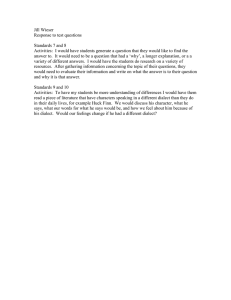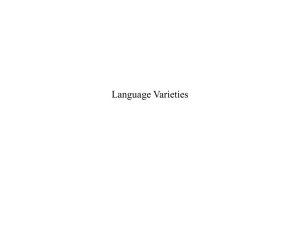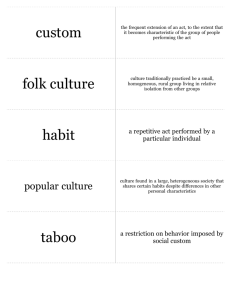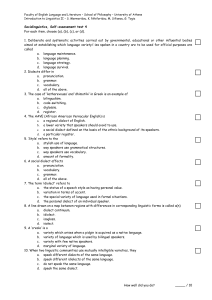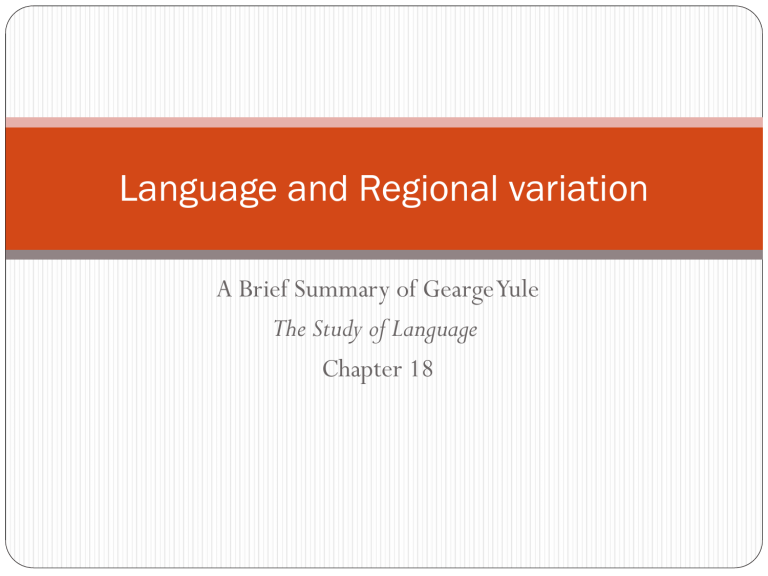
Language and Regional variation A Brief Summary of Gearge Yule The Study of Language Chapter 18 The standard Language Idealized variety: accepted official language of a community or country. Standard English: printed in newspapers, books, widely used in mass media, and taught at schools. It is the variety taught to those who want to learn English as a second or foreign language It is clearly associated with education and broadcasting It is more easily described in terms of written language than spoken language. Accent and Dialect Accent: technically restricted to the description of aspects of pronunciation that identify where an individual speaker is from, regionally or socially. Dialect is used to describe features of grammar and vocabulary as well as pronunciation Dialectology There is a general impression of mutual intelligibility among speakers of different dialect despite some differences. This is one of the criteria used in the study of dialects or dialectology It is important to emphasize that none of the dialects is inherently better than any other. They are simply different. Regional Dialects All languages are spoken in different ways in different regions. This led to the recognition of regional dialects. Isogloss, dialect boundaries and The Dialect Continuum If a vast majority of speakers in one area say they carry things home from store a paper bag while the majority in another area say they use a paper sack, then it is usually possible to draw a line across a map separating the two areas. This line is called isogloss However, the drawing of isoglosses tends to obscure the fact that at most dialect boundary areas, one dialect merges into another. Thus, forming form a dialect continuum. Bilingualism and Diglossia Bilingualism is a situation where two official languages are used. Diglossia describes a situation involving two distinct varieties. In diglossia, there is a low variety used for every day affairs and a high variety learned ins schools. Pidgin and Creoles A pidgin is a variety of language developed for some practical purpose, such as trading among groups of people who had a lot of contact but did not know each other’s language. When a pidgin develops beyond its role as a trade or contact language and becomes the first language of a social community, it is described as Creole.

